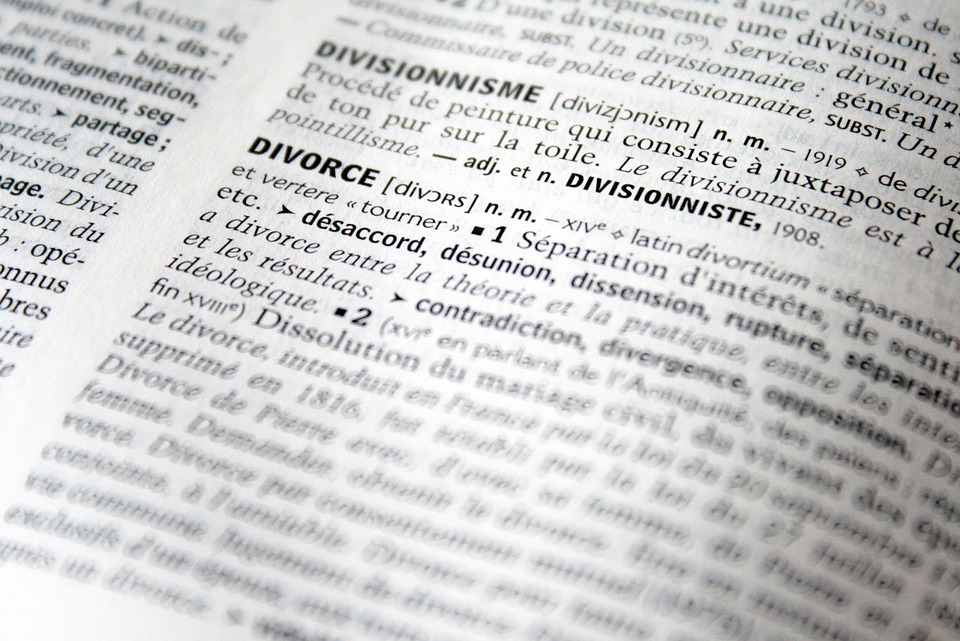Commonplace Deviation Formulation: Definition, Perform, and Examples Questions
Commonplace deviation is a crucial idea in statistics that’s used to measure the unfold of knowledge across the imply worth. This time period can also be known as customary deviation. In knowledge evaluation, we regularly wish to know the way a variable or knowledge spreads out from its surroundings.
On this information we are going to talk about customary deviation in full, together with the definition and which means of normal deviation, the method for calculating it, and examples of its use in knowledge evaluation.
You’ll learn to calculate the usual deviation for particular person and group knowledge, in addition to perceive the which means of normal deviation values in deciphering knowledge.
What’s customary deviation?
Commonplace deviation is outlined as a statistical worth used to measure the distribution of knowledge in a pattern and the way shut the placement of particular person knowledge factors is to the imply or median worth of the pattern. This idea is used to supply details about the unfold of knowledge from the common worth.
The upper the usual deviation, the higher the variance or distinction between particular person knowledge factors and your common. The usual deviation in a knowledge set may be zero or lower than zero.
If the worth is zero, all values within the knowledge set have the identical worth. Nevertheless, if the usual deviation or customary deviation worth is smaller or bigger than the zero level, this means that the person knowledge factors lie removed from the imply worth.
To calculate the usual deviation worth for a knowledge set, it’s essential to observe a number of steps. First, calculate the common worth (imply) of all knowledge factors. Subsequent, calculate the variance of the info by taking the distinction between every knowledge level from the imply worth.
Then sq. the deviation worth at every knowledge level, and differentiate it by the sq. of the imply worth. This worth known as variance. After acquiring the variance worth, the following step is to take the sq. root of the variance worth to get the usual deviation worth.
This fashion, you’re going to get details about how shut or far particular person knowledge factors are from the common worth within the knowledge set.
Is the usual deviation the identical as the common deviation?
On this planet of statistics, there are two vital ideas which can be typically used to measure the distribution of knowledge, that are the usual deviation and the imply deviation. There are variations between these two ideas that have to be understood properly.
1. Common deviation
Imply deviation is an idea describing how far particular person knowledge factors are from the common worth in a set of knowledge. The smaller the imply deviation, the nearer the info factors are to the imply worth, which signifies that the info tends to be extra homogeneous.
This idea is beneficial for realizing the extent to which knowledge deviates from the central worth.
2. Commonplace deviation
Alternatively, customary deviation is used to measure the unfold of knowledge in a pattern and the extent of variation or distinction between particular person knowledge factors and the common. The upper the usual deviation, the higher the variance within the knowledge, and the additional away the person knowledge factors are from the imply.
These two ideas are vital in analyzing knowledge and offering details about knowledge variations within the pattern. Nevertheless, they’ve completely different formulation and makes use of, so it is very important perceive the distinction between customary deviation and imply deviation properly.
With the fitting understanding, you should use these two ideas successfully in your statistical evaluation.
Commonplace deviation perform
Some customary deviation features are:
1. Measure the distribution of knowledge
Commonplace deviation is used to judge the unfold of knowledge from the imply worth. The upper the usual deviation, the higher the variance or distinction between particular person knowledge factors and the common worth.
2. Decide knowledge homogeneity
You should use customary deviation to judge the homogeneity or uniformity of knowledge in a bunch. If the usual deviation is near zero, the info tends to be homogeneous or have little variation.
Conversely, if the usual deviation is massive, the info tends to be heterogeneous or have higher variance.
3. Establish outliers
Commonplace deviation features that will help you establish outliers or knowledge factors which can be removed from the imply worth. If there are knowledge factors with a big customary deviation, these factors may be thought-about outliers that should be paid particular consideration to.
4. Danger measurement
Commonplace deviation can also be helpful for measuring threat or adjustments in funding outcomes. Within the context of investor cash administration for startups, customary deviation helps you perceive how a lot funding outcomes differ from the anticipated common.
Commonplace deviation method
Under is the method for normal deviation.
1. Pattern
Info:
- xi is the worth of every knowledge level within the pattern.
- x̄ is the common worth of all knowledge within the pattern.
- n is the variety of knowledge within the pattern.
- √ is the sq. root image.
- Σ is the image for the sum of all values in parentheses.
- (n – 1) is the correction issue used as a result of we’re utilizing pattern knowledge, not your entire inhabitants. This correction issue is used to acquire a extra correct estimate of the inhabitants customary deviation.
2. Inhabitants
Info:
- xi is each worth within the knowledge society.
- μ is the imply (median) worth of the info set.
- N is the whole quantity of knowledge within the inhabitants.
- √ is the image for the sq. root signal.
- Σ is the image for including all of the values in parentheses.
The primary distinction between the method for inhabitants customary deviation and pattern customary deviation lies within the denominator. Within the inhabitants customary deviation method, the denominator is the whole quantity of knowledge within the inhabitants (N).
In the meantime, within the pattern customary deviation method, the denominator is the whole quantity of knowledge within the pattern minus one (n-1). A correction issue (n-1) is utilized in the usual deviation method mannequin to supply a extra correct estimate.
It is because samples are likely to have higher variance than the whole inhabitants. In the meantime, within the whole inhabitants, no correction elements are wanted as a result of all knowledge are included within the calculation.
3. Varian
The method for the variance of the info is:
This method can be utilized as a solution to discover the usual deviation, i.e. by s = √variance. This can be another you are able to do in fixing issues associated to plain deviation.
Instance of normal deviation questions
Under is an instance of a query that may improve your understanding of normal deviation. You possibly can attempt to full it first earlier than watching the dialogue.
1. Query: Calculate the usual deviation of the info for the next group:
| Season | repetition |
| 10 – 20 | 5 |
| 20 – 30 | 10 |
| 30 – 40 | 15 |
| 40 – 50 | 20 |
Reply:
- Calculating the midpoint of the semester:
Midpoint for sophistication 10-20: (10 + 20) / 2 = 15 Midpoint for sophistication 20-30: (20 + 30) / 2 = 25 Midpoint for sophistication 30-40: (30 + 40) / 2 = 35 midpoint 40-50: (40 + 50) / 2 = 45
Price price (μ) = ((15 x 5) + (25 x 10) + (35 x 15) + (45 x 20)) / (5 + 10 + 15 + 20) Price price (μ) = (75 + 250 + 525 + 900) / 50 price ratio (μ) = 1750 / 50 price ratio (μ) = 35
Variables = (((15-35)^2 * 5) + ((25-35)^2 * 10) + ((35-35)^2 * 15) + ((45-35)^2 * 20) ) / 50 variables = ((400 * 5) + (100 * 10) + (0 * 15) + (100 * 20)) / 50 variables = (2000 + 1000 + 0 + 2000) / 50 variables = 5000 / 50 Varian = 100
- Calculate the usual deviation:
S = √Varians
x = √100
S = 10.52 (two digits taken after the comma)
So the usual deviation of the group knowledge is about 10.52.
2. Query: A trainer desires to know the way a lot his college students’ scores on a math check differ from the category common. The typical class rating is 75 and the scholars’ scores are as follows: 80, 70, 85, 90, 60. You might be requested to calculate the usual deviation of the info.
Answer:
- Calculate the common: (80 + 70 + 85 + 90 + 60) / 5 = 77
- Calculate the distinction between every worth and the common: (80 – 77), (70 – 77), (85 – 77), (90 – 77), (60 – 77) = 3, -7, 8, 13, – 17
- The sq. of every distinction: 3^2, (-7)^2, 8^2, 13^2, (-17)^2 = 9, 49, 64, 169, 289
- Add all of the squared outcomes: 9 + 49 + 64 + 169 + 289 = 580
- Divide the sum of the end result by the quantity of knowledge: 580 / 5 = 116
- Take the sq. root of the division end result: root (116) ≈ 10.77
So, the usual deviation of the info is about 10.77.
- Drawback: The corporate desires to know the way properly its workers’ salaries are distributed. The next is the month-to-month wage knowledge for workers: 3 million, 4 million, 5 million, 6 million, 7 million, 8 million, 9 million, 10 million. You might be requested to calculate the usual deviation of the info.
Answer:
- Calculate the common: (3 + 4 + 5 + 6 + 7 + 8 + 9 + 10) / 8 = 6.125 million
- Calculate the distinction between every worth and the common: 3 – 6.125, 4 – 6.125, 5 – 6.125, 6 – 6.125, 7 – 6.125, 8 – 6.125, 9 – 6.125, 10 – 6.125 = -3.125, -2.125, -1.125, -0.125 , 0.875, 1.875, 2.875, 3.875
- The sq. of every distinction: (-3.125)^2, (-2.125)^2, (-1.125)^2, (-0.125)^2, 0.875^2, 1.875^2, 2.875^2, 3.875^2 = 9.766, 4,516, 1,266, 0.016, 0.766, 3,516, 8,016, 15,016
- Add all of the squared outcomes: 9.766 + 4.516 + 1.266 + 0.016 + 0.766 + 3.516 + 8.016 + 15.016 = 43.92
- Divide the whole end result by the whole knowledge: 43.92 / 8 = 5.49
- Take the sq. root of the division: root (5.49) ≈ 2.34
So, the usual deviation of the info is about 2.34 million.
Shut
The pattern questions above may help you perceive customary deviation and implement it in on a regular basis life. You possibly can repeat the dialogue if you’re nonetheless confused and attempt to perceive it once more.
Commonplace deviation is a mathematical idea that have to be properly understood. Understanding the idea and realizing the proper method is the important thing to fixing the issue. You possibly can proceed to follow pattern questions to grasp the fabric higher.





